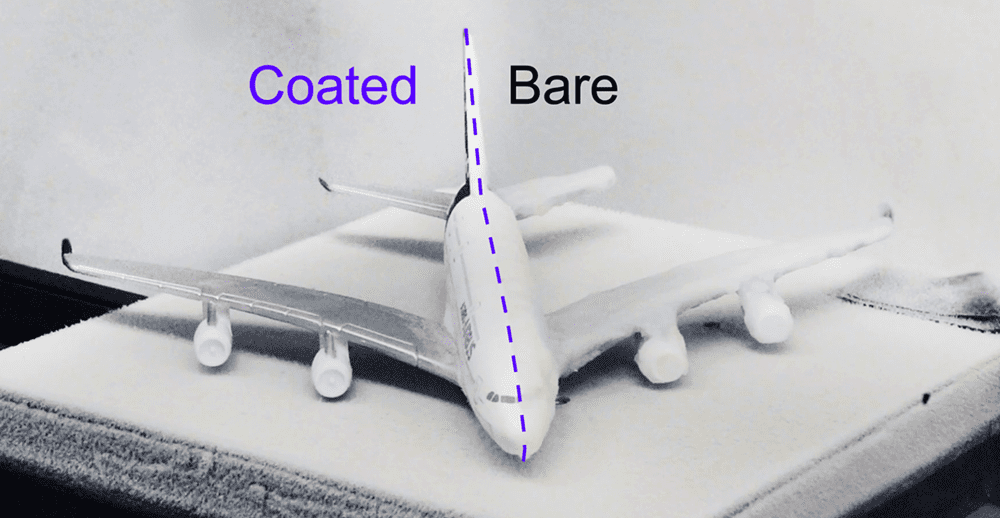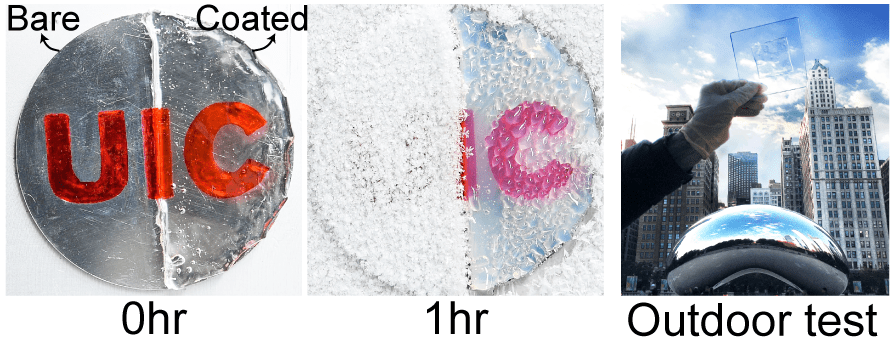Every year, companies and municipalities around the globe spend billions on de-icing solutions. These techniques are either short-lived or expensive — so we’ve developed a better and safer one.

When winter comes, temperatures plummet across the northern hemisphere. But that doesn’t discourage millions of travelers from boarding a plane to travel the world and celebrate the Christmas holidays with their loved ones. But for most people traveling in and out of North America, Canada, or Europe, the beauty of this winter holiday gets spoiled right at the airport.
Every year, thousands of flights around the globe get delayed or canceled because of frigid winter weather, wreaking chaos and costing airlines billions of dollars, or even triggering accidents in the worst cases.
Conventional techniques to prevent frost and ice buildup on surfaces in cold weather rely heavily on the use of liquid deicing chemicals that need to be applied in thousands of gallons. However, being liquid, these chemicals get quickly dissolved or depleted, meaning they need to be applied time and again. Eventually, these anti-freeze chemicals end up polluting the freshwater streams, resulting in large sums of money going right down the drain (quite literally).
How about solving this problem by using materials that are solid when cold and can hold-off frost for extended hours?
A recent study by scientists from the University of Illinois Chicago (UIC), of which I was a co-author, addresses this long-standing burning issue and suggests a solution.

The researchers have developed an extensive family of more than 80 anti-freezing coatings which are bio-friendly in nature. These coatings outperform conventional materials by at least an order of magnitude and offer several other advantages. For starters, they can be easily applied on a variety of materials (ranging from aluminum, glass, plastic, or any industrial surface) bestowing them with the ability to prevent frosting for long hours while also allowing them to easily shed any ice formed on their surface.
The anti-freezing gels are also transparent under winter precipitation conditions like a snowstorm. This is particularly important for applications where optical transparency is crucial for their operation — things like architectural windows, automotive windshields, solar photovoltaic devices, traffic lights on roads, and the guiding lights which help an airplane during landing or take-off.

The developed materials function by leveraging phase-changing physics, by virtue of which they can sustain an in situ generated surface lubricating layer. This slippery layer functions as a protective barrier and repels a number of contaminants, ranging from disease-causing bacteria to frost from coming in direct contact with the underlying substrate. The all-in-one package is hence multifunctional by design.
Having applied for a worldwide patent application titled “Compositions and Methods for Inhibiting Ice Formation on Surfaces”, we eventually plan on commercializing the technology in the near future for demanding applications in industries ranging from energy and transportation (planes, cars, marine ships) to healthcare systems.
The work is reported in an article titled “A family of frost-resistant and icephobic coatings” published recently in Wiley Advanced Materials journal.
Was this helpful?



